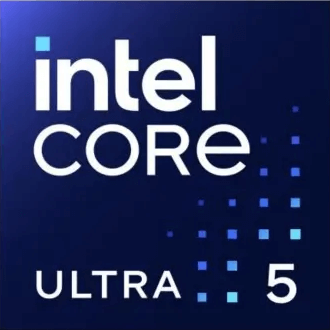Intel Celeron J4125 vs Intel Core Ultra 7 265
We compared two desktop CPUs: Intel Celeron J4125 with 4 cores 2.0GHz and Intel Core Ultra 7 265 with 20 cores 2.4GHz . You will find out which processor performs better in benchmark tests, key specifications, power consumption and more.
Main Differences
Intel Celeron J4125 Advantages
Lower TDP (10W vs 65W)
Intel Core Ultra 7 265 Advantages
Released 5 years and 1 months late
Higher specification of memory (6400 vs 2400)
Larger memory bandwidth (102.4GB/s vs 38.4GB/s)
Newer PCIe version (5.0 vs 2.0)
Higher base frequency (2.4GHz vs 2.0GHz)
More modern manufacturing process (3nm vs 14nm)
Score
Benchmark
Geekbench 6 Single Core
Intel Celeron J4125
346
Intel Core Ultra 7 265
+764%
2991
Geekbench 6 Multi Core
Intel Celeron J4125
784
Intel Core Ultra 7 265
+2429%
19830
Passmark CPU Single Core
Intel Celeron J4125
1156
Intel Core Ultra 7 265
+312%
4770
Passmark CPU Multi Core
Intel Celeron J4125
2978
Intel Core Ultra 7 265
+1492%
47434
General Parameters
Nov 2019
Release Date
Dec 2024
Intel
Manufacturer
Intel
Desktop
Type
Desktop
x86-64
Instruction Set
x86-64
Gemini Lake Refresh
Core Architecture
Arrow Lake
J4125
Processor Number
265
BGA-1090
Socket
FCLGA-1851
UHD Graphics 600
Integrated Graphics
Arc Graphics
-
Generation
Ultra 7 (Arrow Lake)
Package
-
Transistor Count
17.8 billions
14 nm
Manufacturing Process
3 nm
10 W
Power Consumption
65 W
-
Max Turbo Power Consumption
182 W
105 °C
Peak Operating Temperature
105 °C
-
Foundry
TSMC
-
Die Size
243 mm²
CPU Performance
4
Performance Cores
8
4
Performance Core Threads
8
2.0 GHz
Performance Core Base Frequency
2.4 GHz
-
Performance Core Turbo Frequency
5.3 GHz
-
Efficiency Cores
12
-
Efficiency Core Threads
12
-
Efficiency Core Base Frequency
1.8 GHz
-
Efficiency Core Turbo Frequency
4.6 GHz
4
Total Core Count
20
4
Total Thread Count
20
-
Bus Frequency
100 MHz
20x
Multiplier
24
32 K per core
L1 Cache
192 K per core
4 MB shared
L2 Cache
3 MB per core
-
L3 Cache
30 MB shared
No
Unlocked Multiplier
No
-
SMP
1
Memory Parameters
DDR4-2400, LPDDR4-2400
Memory Types
DDR5-6400
8 GB
Max Memory Size
256 GB
2
Max Memory Channels
2
38.4 GB/s
Max Memory Bandwidth
102.4 GB/s
No
ECC Memory Support
Yes
Graphics Card Parameters
true
Integrated Graphics
true
200 MHz
GPU Base Frequency
-
750 MHz
GPU Max Dynamic Frequency
1950 MHz
96
Shader Units
-
12
Texture Units
-
2
Raster Operation Units
-
12
Execution Units
-
5 W
Power Consumption
-
3840x2160 - 30 Hz
Max Resolution
-
0.14 TFLOPS
Graphics Performance
-
Miscellaneous
2.0
PCIe Version
5.0
6
PCIe Lanes
24
SSE4.2
Extended Instruction Set
-









